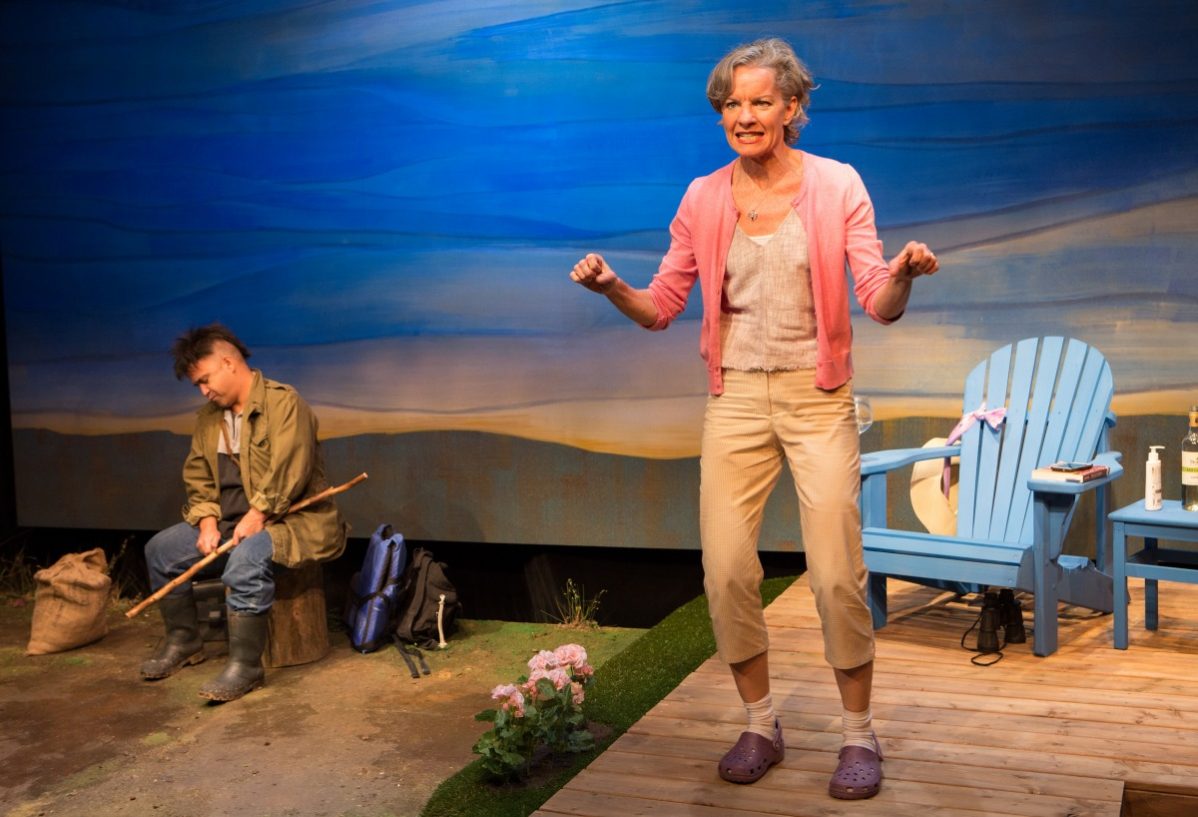Cottagers and Indians, inspired by a real-life fight in the Kawartha Lakes, shows racism can make the most scenic place ugly
It’s a case of “not in my back yard” versus “well, actually this isn’t your backyard.”
Cottagers and Indians is a story of a skirmish that is at turns both silly and serious. For fans of playwright Drew Hayden Taylor, the play is a vintage effort that highlights the humour and humanity in cultural clashes between white and Indigenous people.
The conflict of the play is seeded as a local Anishinaabe man Arthur Copper, played by Herbie Barns, plants and harvests wild rice in the lakes around the cottage of Maureen Poole, an upper middle-class woman from North York, played by Tracy Hoyt.
The wild rice, or manoomin in Anishinaabe, is a business and cultural opportunity for the affable Copper, who views its planting and harvest as tying into the traditional land use of the area. For Poole, on the other hand, the rice stocks are an affront to views and uses of the lakes that she’s accustomed to.
Poole’s arguments for Copper to cease his operations could be thrown out entirely for their absurdity if they weren’t so familiar. If fact, Cottagers and Indiansis loosely based on a conflict that is ongoing in the Kawartha Lakes region of Ontario, just northeast of Toronto.
There, some cottagers have banded together and formed a group called Save Pigeon Lake, after James Whetung, a member of Curve Lake First Nation, began to cultivate wild rice in the region and sell it.
It’s easy to dismiss Poole, who has all of the self-assured and white wine fuelled obliviousness of a Real Housewives starlet. She might mean well but somehow manages to be low-key racist almost every step of the way.
Her accusations that Copper didn’t properly consult the cottagers for his wild rice growing ambitions are too rich given Canada’s history of plowing over Indigenous communities for resources, and her claims of reverse racism being directed towards the largely white cottage owners are laughable.
The defensive posture of Hoyt’s character is also eerily familiar to many white reactions to racial tensions, as she oscillates from fragility to saying she loves Indigenous things, including writer Joseph Boyden, whose claims of Indigenous heritage are in hot dispute.
However, Hayden Taylor sharply provides some humanity to Poole as well. She begins to question her thoughts and actions—though long after the audience—and it becomes obvious that her own personal pain is a strong motivator for her campaign against the wild rice.
To ignore her suffering, particularly after Copper quietly pays tribute to Poole’s loss, seems callous. If he can have empathy for the insufferable Poole, so can the audience.
The only tricky aspect of Cottagers and Indians is that with so much humanity and humour at play, the darker edges — colonialism, racism, erasure of Indigenous culture and more — blur into the background. But then again, maybe a funny and charming play can harvest more or different rice in the end.
Cottagers and Indians, directed by Patti Shaughnessy, is playing at the Tarragon (30 Bridgman) until March 25. Tickets are $20-$60.



